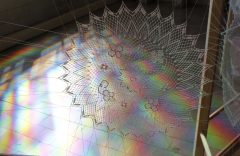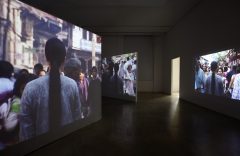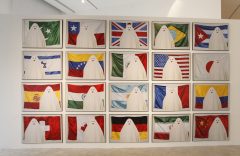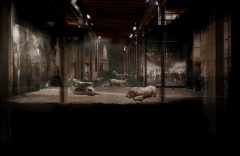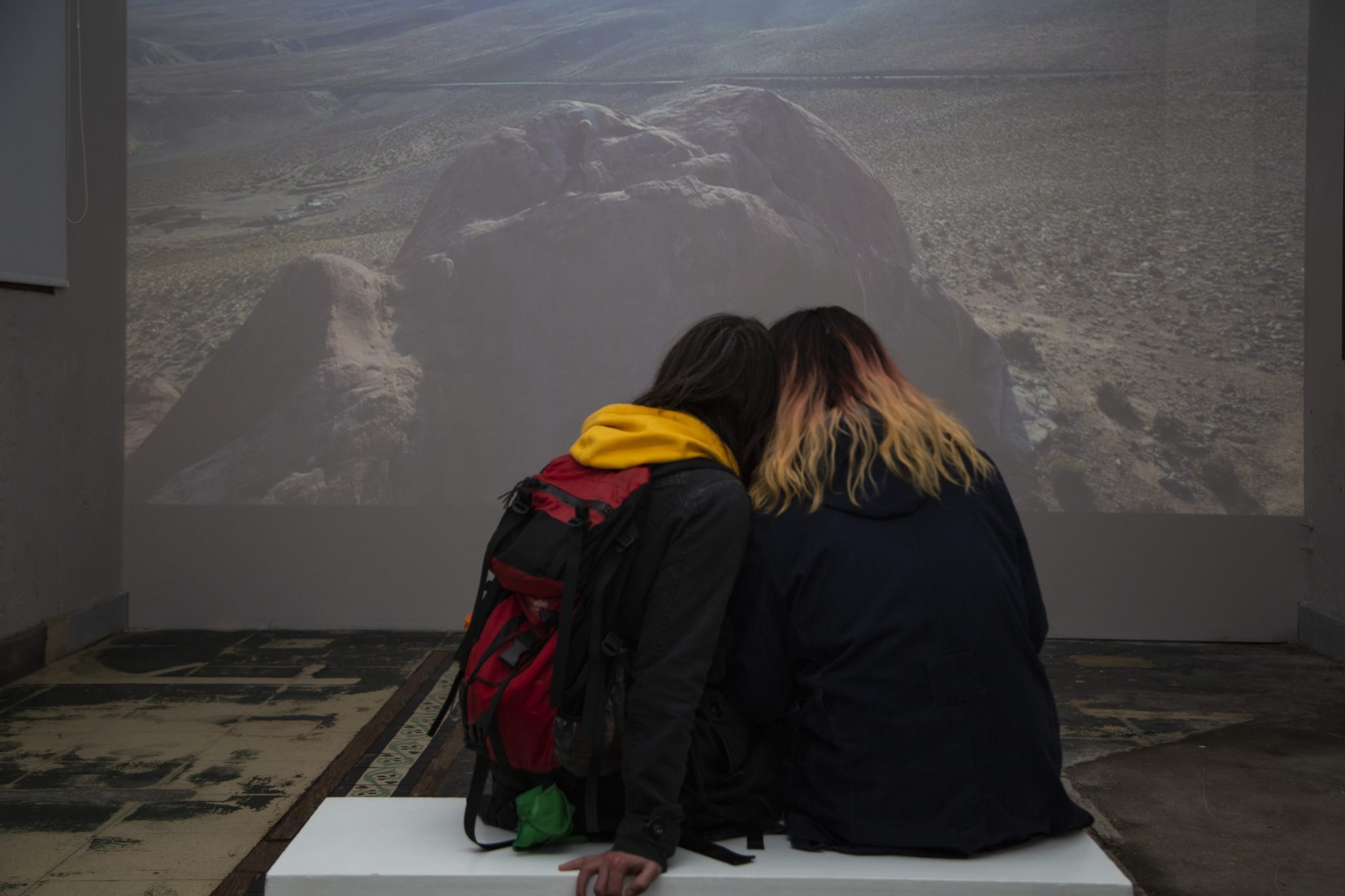
The University museum is preparing for 2020 with renowned Italian art references such as Maria Lai and Bruna Esposito, and exhibitions linked to migration, identities, gender and the environment After 24 exhibitions and 38 actions with more than 70 artists, the visit of more than 2300 school groups of different educational levels, 140 activities for the elderly and 112 for children and families, the Museum of the Universidad Nacional de Tres de Febrero (MUNTREF) ends 2019 and prepares for 2020 with unprecedented national and international exhibitions in Argentina. Maria Lai is expected to be at the MUNTREF Immigrant Hotel during the first half of next year. The Diaries of the Soul, a retrospective of the works that the Italian artist produced from the 1960s onwards and that enshrined her as one of the most singular voices of European conceptual art. Co-produced by the MAXXI-National Museum of the 21st Century Arts in Rome and the MUNTREF, the exhibition will include Baked Books, Sculptures, Geographies and her famous Looms. In the old Immigrants’ Hotel, during the second half of the year, Babel, the routes of translation, a project by French philosopher and linguist Barbara Cassin, will be opened to the public. It will be exhibited together with Azul de Prusia, by Mexican painter Yishai Jusidman, a proposal that subtly explores the horror of the Holocaust from the perspective of color. On the other hand, From the Eastern Mediterranean to the Plata will take place, an exhibition that seeks to replenish the presence of groups from that region, bearers of varied cultural and religious traditions, who managed to live together in our country in the diversity and development of their own identities. Completing the exhibitions at the MUNTREF Immigrant Hotel, Lamborghini and its contemporary counterparts will also be displayed. Meanwhile, the MUNTREF Art and Nature will bring for the first semester Alquimia, the first individual exhibition in Argentina by Italian Bruna Esposito, a co-production of the MAXXI in Rome and the MUNTREF aswell. For the second semester, Nosotrxs, cuerpos agua, by Argentinean Jimena Croceri and Swiss Sarina Scheidegger, will be shown in collaboration with Pro Helvetia. With the support of the French Institute and the French Embassy, the MUNTREF Visual Arts will offer for the first semester Ways of Seeing, a curatorial essay of the selection of a set of videos from the FRACS (Regional Contemporary Art Fund, France) collection, which will address the issue of transits and migrations, identities, social tensions, gender and environmental issues. Later on, it will be the turn of Panorama, an exhibition produced by the French Institute with more than 100 photographs from the 19th, 20th and 21st centuries that seeks to provide a view of the heritage and photographic creation in France and Argentina. Finally, the MUNTREF Art and Science, a nodal space for the interactions between artists and scientists, will launch the mentoring program for interdisciplinary projects, in collaboration with INVAP, and research activities on art, synthetic biology and bioinformation will be expanded with the University of Buenos Aires and on art, science and technology with Ars Electronica. Artistic, social and educational balance On the 2019 balance sheet, of the four MUNTREF venues with their five units, the director of the Department of Art and Culture and deputy director of the MUNTREF, Diana Wechsler, said that they sought to extend the call “not only to sectors that normally transit the art spaces but to those who do not usually feel challenged”. In this sense, she highlighted that one of the greatest joys of 2019 was the realization of 31 colors, an artistic, social and educational project in which four weavers and embroiderers from the Padre Carlos Mugica neighborhood and four artists from the Master’s Degree in Technology and Aesthetics of Electronic Arts at the Universidad Nacional de Tres de Febrero (UNTREF) worked together. “The Pistoletto Buenos Aires project was also a great challenge and a great satisfaction because it allowed us to articulate diverse cultural universes in the key of a contemporary humanism, which is what we are trying to develop,” continued the researcher and curator. Wechsler pointed out that what the Museum seeks is to vindicate the right to culture. “We believe that it is from this vindication that it is possible to make other rights visible. We seek to carry out a comprehensive program of what we understand socially responsible art IS”, she added. Reviewing the MUNTREF exhibitions presented during the year, many of the topics that run through them have to do with that social responsibility to which Wechsler alludes: migrations as a human right, respect for diversity, warnings about the degradation of the planet and the denunciation of colonial and patriarchal logics are some of the most outstanding ones. Along these lines, the Caminantes (Walkers) photography exhibition at the MUNTREF headquarters stood out, with a focus on migrations and exile, resulting from an open call for professional and amateur photographers to share their images and the stories behind them. Once again, the idea was to build bridges with the community. Likewise, the Argentinean artist Carla Zaccagnini presented the exhibition Tomorrow was goind to be yesterday, in which, through pieces of diverse formats, she portrayed the migratory and integration processes that her grandfather underwent throughout the 20th century, proposing a connection between subjective history and social history. Meanwhile in [Post] Colonial Bodies I, an exhibition that formed part of the CineMigrante Festival program, the video installations by Kader Attia and Onyeka Igwe could be seen, both of which emphasized bodies that had been subjected to racist violence and their modes of resistance. Finally, the Fourth Edition of the Braque Award and the XII International Congress of Inclusive Museums took place at the old Immigrant Hotel. The MUNTREF Center of Art and Science developed some activities such as the Forum of Art and Space with specialists from different countries, as well as the talk on sustainability and food Mushrooms, a kingdom to be discovered, by the biologist Gonzalo Romano. At the same time, Desborde (Overflow) was inaugurated at the MUNTREF Museum of Visual Arts, an exhibition curated by students of the Master’s Degree in Curatorship of Visual Arts with works produced within the framework of the Master’s Degree in Technology and Aesthetics of Electronic Arts; Under construction, a heterogeneous collection of MUNTREF on modern and contemporary art with pieces by Annemarie Heinrich, Hugo Aveta, Christian Boltanski, Leila Alaou, Voluspa Jarpa, Adriana Lestido, Mariano Sardón, Carlos Sessano and Clorindo Testa, among others; A certain panorama, recent author’s photography in Spain, collective exhibition that gathered more than 50 novel Iberian authors; and Evita de colección, created with works that integrate the collection of the MUNTREF and others coming from private collections, on the occasion of the hundredth anniversary of the birth of Eva Perón. Outstanding headquarters of BIENALSUR The MUNTREF’s headquarters located in the city of Buenos Aires were central exhibition spaces for the second edition of the International Biennial of Contemporary Art of South America (BIENNIALSUR 2019). The KM 0 of the Biennial was inaugurated at the old Immigrants Hotel, the starting point of its particular cartography, where the openings of some of its most important exhibitions were accompanied by area dance shows, mapping and light shows. Among these exhibitions, the already mentioned Pistoletto Buenos Aires stands out, with some of the most emblematic productions of the great reference of arte povera, such as Porte Uffizi, Metamorphosis and Fame Amore Arte. At the same time, American artist and activist Martha Rosler presented Maybe This Time It’s Different, a project that consisted in the creation of a library on art and feminism in Spanish, with the collaboration of the Interdisciplinary Network of Gender Studies and the UNTREF Interdisciplinary Center for Gender Studies and Policies. Several events were held around this exhibition, such as a feminist book fair and talks dedicated to the current situation of women’s movements and sexual dissidence, as well as urban phenomena that promote inequality. Also inaugurated were Resident Alien, a selection of works from the personal collection of French filmmaker and producer Marin Karmitz, and the installation Good apples / Bad apples, by Brazilian Rosângela Rennó, made from photographs of entire and destroyed monuments of Vladimir Lenin at different times. Another of the attractions of the MUNTREF Old Immigrants Hotel venue was the group exhibition Immediately after and shortly before 25 years of Berlin – Buenos Aires, with works by Eduardo Basualdo, Edith Dekyndt, Gabriela Golder and Marcel Odenbach. The reflective approaches to migration, displacement, borders and territory covered other works exhibited in that space, such as Exodus Library and The camel’s foot, by Moroccans Hassan Bourkia and Mohamed Arjedal; 05786, in which artists of various nationalities presented an installation made from the blankets discarded by the United Nations High Commissioner for Refugees (UNHCR); If it moves it’s alive, by Spanish artist Diego Vivanco, who questions flags and their different functions through video, photography and installation; the installation From the other side, by Argentinean artist Pablo Reinoso; and the film Latitude 40°, by Olaf Holzapfel. Furthermore, the MUNTREF Center for Art and Nature hosted the flower sculptures by Japanese Makoto Azuma, the installation Under the lime tree by Uruguayan Rita Fischer and the exhibition Vegetal Memory from the Robert Brendel Collection of the Juan A. Domínguez Museum of Pharmacobotany, which is part of the University of Buenos Aires.
News
